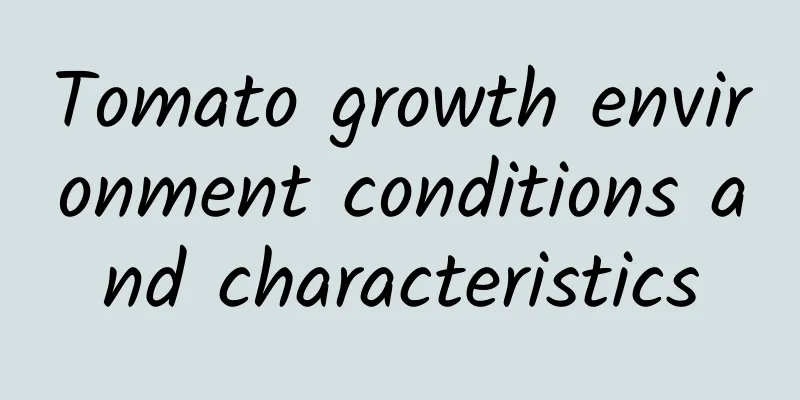Tomato growth environment conditions and characteristics

Tomato growth environment conditions and requirementsThe fruit of tomatoes grows on the vine and the roots grow in the soil. Due to the influence of the climatic conditions of their place of origin, tomatoes have the habits of liking warmth and light, being afraid of frost and heat, and being resistant to fertilizer. Therefore, they grow well and have high yields in the warm spring and autumn climates with strong light. However, they grow weakly, are prone to diseases and insects, and have low yields in the hot and rainy summer or the cold and little light winter. Tomato growing temperatureThe suitable temperature for tomato seedlings is 20-25℃ during the day and 10-15℃ at night. It is sensitive to temperature during the flowering period, which is 20-30℃ during the day and 15-20℃ at night. The short-term lowest temperature it can tolerate is -1℃ and the highest temperature is 38℃. Tomato Growth HumidityTomatoes consume a lot of water and have a strong ability to absorb water, so there is no need to water them frequently and in large quantities. Tomatoes require lower air and humidity for growth, generally 45% to 50% is appropriate. Watering should be based on the principle of watering when the soil is dry and watering when the soil is wet. Tomato Growing SoilTomatoes have strong adaptability to soil and can easily obtain high yields in loam that is deep, loose, breathable, and rich in organic matter. Tomatoes also like fertilizer, especially during the fruiting period, their water and fertilizer needs should be met. Tomato growth cycle and processTomatoes can grow in spring, summer, autumn and winter, and the growth cycle of tomatoes is about 110-170 days. The development period is generally 7-9 days. Under suitable temperature, seedlings generally need about 50 days, 60-80 days in cold seasons, and about 40 days in hot seasons. The flowering and fruiting period takes 15-30 days. Early maturity or high temperature cultivation requires a shorter time, and vice versa. |
<<: Cypress growth environment conditions and characteristics
>>: How to grow lipstick succulent and what to pay attention to
Recommend
When do dahlias bloom?
1. When does it bloom? Usually, most of the outdo...
These succulents, just one pot will bring you good fortune, cute and auspicious
1Dharma Fu Musume The first thing Huahua wants to...
What medicine to use for orchid stem rot
Orchid stem rot Causes of stem rot Orchid stem ro...
Clivia cultivation methods and precautions
1. Temperature Clivia prefers a slightly cool cli...
Is Dieffenbachia easy to raise?
1. Is it easy to raise? It is quite easy to grow....
Do roses need to be pruned in spring?
1. Do you want to trim? Roses need to be pruned i...
How to Plant White Rose Seeds
White Rose Seeds Introduction The seeds of white ...
What trees are suitable for greening in Xinjiang? What are the landscape trees suitable for planting on both sides of the road?
What trees are suitable for greening in Xinjiang?...
How to propagate jade tree
Reproduction method Branch cuttings During the gr...
The difference between elmleaf plum and beauty plum
1. Difference of blades The leaves of Prunus arme...
How to prune grape vines?
Grapevine pruning is an important part of vineyar...
How to distinguish melons and chestnuts
1. Blades There are 5-11 leaflets in the gourd ch...
What to do if the leaves of cyclamen fall down
1. Stop watering (1) Specific reasons: It may be ...
Can I use egg shells when growing orchids? (The correct way to use egg shells to grow orchids)
Can egg shells be used to grow orchids? Although ...
How to water lilies
Lily's life characteristics: Lilies do not li...









